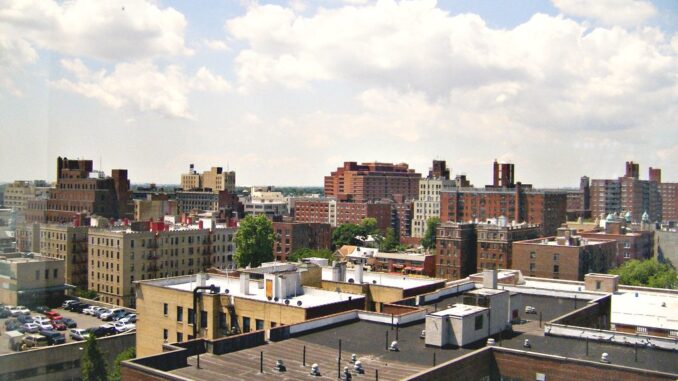
BY SAMUEL MORTEL
Jamaica is an interesting pocket of Queens. There’s something about the neighborhood that feels somewhat self-contained as an area with 80,000 residents, 97% of whom being nonwhite and 57% having been born outside of the country. It’s not hard to see how it stands apart from other dense, metropolitan areas in NYC. This is exactly what New York Times writer David McAninch found when covering the neighborhood in a 2007 article, writing, “They are signs of a street life that, though distinctly urban in its grit and rough edges, is more villagelike than cosmopolitan, a life lived beyond the reach of large-scale gentrification”
Unfortunately, it’s starting to feel like that last sentence is in danger of aging poorly.
It’s becoming increasingly common to hear Queens natives lamenting on how much the neighborhood has changed. Oftentimes you might even hear a particular buzzword: gentrification.
This is not a particularly new concern. You can find articles and think-pieces from as far back as 2016 where people express fears that their beloved neighborhood may be falling victim to the dreaded g-word. This mostly stems from relatively small, superficial concerns like a new Shake Shack or the closing of beloved businesses like the Jamaica Multiplex Theater, which has been a landmark since its opening in May 2002. It seems somewhat frivolous to dread the opening of a new restaurant or mourn some movie theater but to some people, a new burger restaurant location serves as warning that they may be getting pushed out.
This flurry of sudden (and somewhat unwelcomed) changes can be tied back to one man: Mayor Eric Adams.
Since taking office in 2022, the Adams administration has had one clear and consistent goal: bringing large sweeping changes to neighborhoods all across the city. It took only his second State of the City Address for Adams to announce his “Working People’s Agenda”, which included an action plan to explicitly execute a “full reconstruction of Jamaica Avenue from Sutphin Boulevard to Merrick Boulevard in Jamaica.”
Since then there’s been a slew of actions and plans announced by Adams that would drastically change areas all over the city, like “Get Stuff Built” and the controversial “City of Yes” Proposal. There are even multiple plans that are specifically centered around Jamaica, like the “Jamaica NOW Plan” and the “Jamaica Neighborhood Plan”. The latter of which is a plan that seeks to “expand housing opportunities, create space for jobs across economic sectors, plan for growth with key infrastructure investments, and improve Jamaica’s public realm.” Although it’s not healthy to be scared of change, there is a lot of concern that all this change may end up doing more harm than good.
Referred to as “the most pro-housing zoning proposal in New York City’s history”, Adams’ City Of Yes proposal makes Jamaica one of the many targets of rezoning and new housing units. Along with City of Yes, The Department of City Planning intends to “deliver more than 50,000 units over the next 15 years in Midtown South in Manhattan and in Long Island City and Jamaica in Queens.”
These numerous plans and proposals have some residents feeling a bit uncertain about their place in Jamaica’s future, but the Department of City Planning asserts that there is nothing to worry about. “With a 1.4% vacancy rate citywide, New York City is in the midst of a severe housing crisis – and that includes Jamaica, Queens. This is the result of housing production not keeping up with demand,” says DCP Deputy Press Secretary Joe Marvilli.
“When that happens, rents go up and the risk of gentrification, displacement, and tenant harassment increases. Through the Jamaica Neighborhood Plan, we can deliver thousands of new homes and ensure, for the first time, that new buildings in Jamaica include a significant amount of permanently income-restricted, affordable housing. This will help existing residents and their families remain and thrive in this community.”
